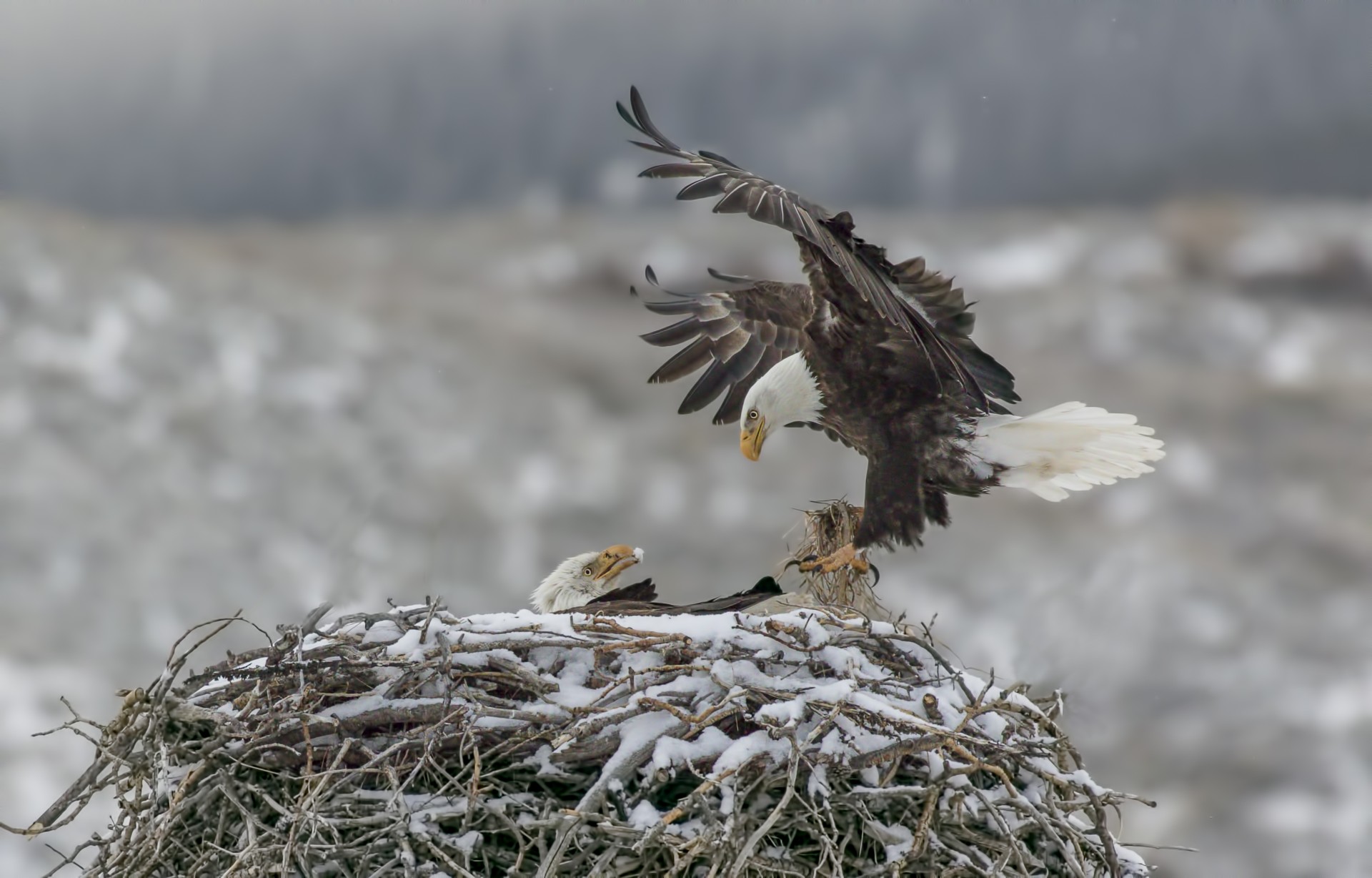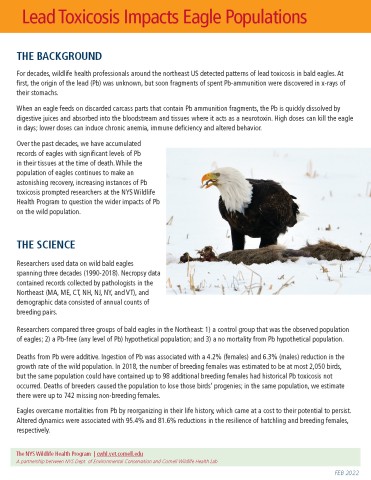UPDATE
Our research into the impact of lead on bald eagle population health continued with a targeted focus on New York State's eagle population. Dig deeper into the threat of lead with "Population impact to bald eagles by ingested lead in New York State, 1990–2018."
Hanley, B. J., Them, C. E., Hynes, K. P., Connelly, P. J., Bunting, E. M., and Schuler, K. L.. 2023. Population impact to bald eagles by ingested lead in New York State, 1990–2018. Wildlife Society Bulletin e1444. https://doi.org/10.1002/wsb.1444
Long before I was aware of the problem, professionals of veterinary medicine and pathology treated, rehabilitated, or necropsied ill, dying, or dead bald eagles. The wild birds had been presented for care after they ingested lead fragments from spent ammunition, discarded on the landscape in the carcasses of legally harvested big game and other upland wildlife. As evidenced by necropsy records, time and again, veterinary professionals saw otherwise healthy birds succumb to the effects of lead, sometimes with desperately little they could do to help.
I was hired as the quantitative modeler to conduct an analysis of their data. Our interdisciplinary team set out to identify the combined impact of these individual deaths to the wild eagle population from whence they came. We discovered that despite increasing abundances of wild bald eagles in the northeast US over the last three decades, deaths associated with lead poisoning reduced the growth rate of eagle populations by 4.2%.
In some scenarios, 4.2% can feel like a big number. Imagine being offered a 7.2% interest rate on a mortgage when a different bank can offer you 3.0%. In that case, a 4.2% difference feels enormous! On the other hand, a 4.2% difference can feel desperately small. After all, statisticians regularly use a 5% p-value as the threshold of significance in scientific studies. In the context of eagles, what does 4.2% mean to you? And to our wildlife legacy?
Our analysis of the veterinary data further revealed that in the face of deaths associated with the ingestion of lead, the wild population has reorganized itself to ensure population growth despite these mortality events. On the one hand, that reorganization speaks to the incredible ability of a population of eagles to overcome obstacles and persist. But on the other hand, that restructuring depleted the resilience of the population to withstand additional mortality from other causes, such as emerging infectious diseases or climate change.
If we look around, we see evidence of climate change impacting the natural resources that we depend on. What does climate change mean for the future of bald eagles? I don’t know. Does anyone know? The evidence suggests that climate change is happening. And in this uncertain future, does the practice of using lead-based ammunition outweigh the cost of the depletion of the resilience to the eagles?
In this study, the i’s have been dotted, and the t’s have been crossed; the data are what they are, and the math is what it is. But natural resource management is not just about the resource, the data, or the math; it is also about people and the choices we make (Balmford and Cowling 2006). So, here is the question: given that alternatives do exist, does an activity that leads to a 4.2% reduction in growth and an alteration to the life history of eagles constitute a reasonable decision in the wise use of our natural resources? It’s our choice.
Here is the link to the article: https://wildlife.onlinelibrary.wiley.com/doi/10.1002/jwmg.22177 and full citation is below.
Hanley, B., J, A. A. Dhondt, M. J. Forzán, E. M. Bunting, M. A. Pokras, K. P. Hynes, E. Dominguez‐Villegas, and K. L. Schuler. 2021. Environmental lead reduces the resilience of bald eagle populations. Journal of Wildlife Management 1–18. https://doi.org/10.1002/jwmg.22177
Literature Cited:
Balmford A, Cowling RM (2006) Fusion or failure? The future of conservation biology. Conserv Biol 20:292–255





